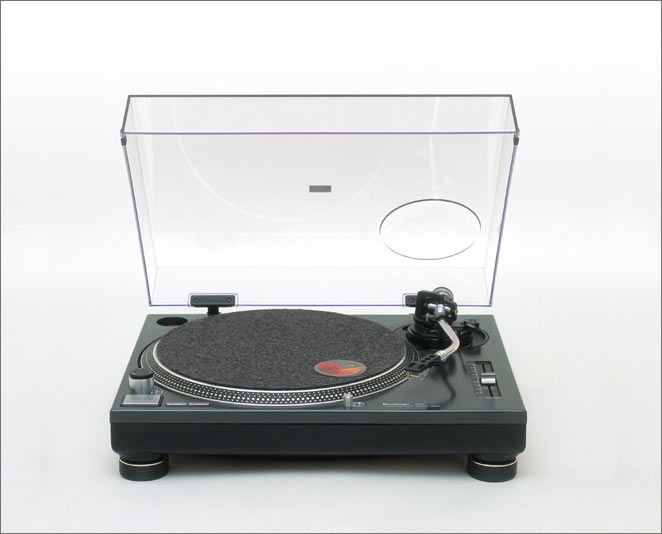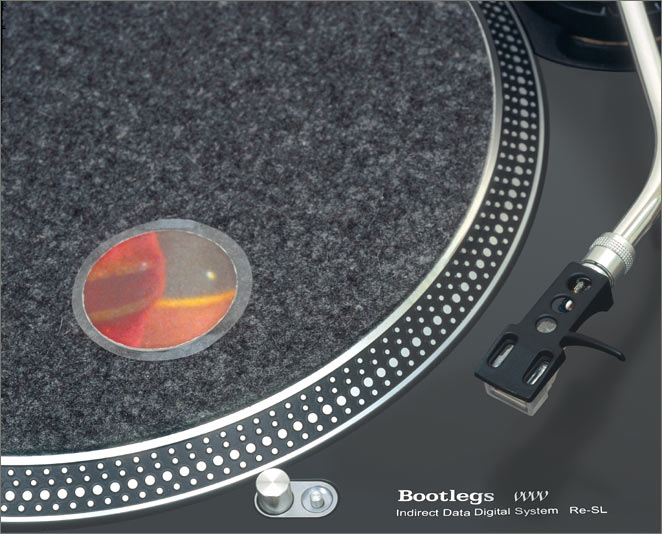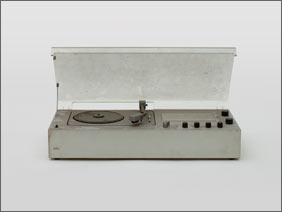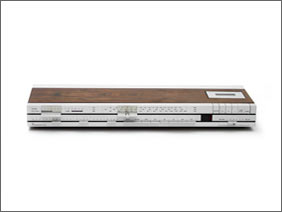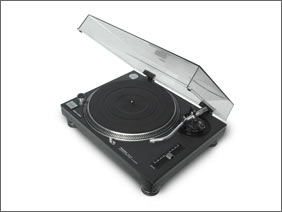| SERIES SOUND |
| SERIES SELF |
| SERIES SCIENCE |
The three objects presented follow three deliberate methods of appropriation of a form: In “ReBraun”, recombination is paramount – while most features remained present, they slide along the surface, into new meanings. At the ReBo, nothing has been moved. Instead, an alien object – the touch screen – has slyly integrated himself. Lastly, the record player object Re-SL has not changed at all (apart from three clownish minimanipulations). Rather, its whole usage context has been taken. All of its working functions are completely different than it might seem, and all of its previous controls are now dead. “Skinning” is the name for the process that makes computer software freely designable. With programs that are skinnable, look, layout and even logic are free to redefinition. The designers have here applied the same principle to the tangible object: A general-purpose personal computer – nothing else is hidden inside the “bootleg objects”- is optimised for a specialized task and gets a new, old, amiable disposition.
Markus Wolf
Vintage case, digital data, mixed multimedia, aluminium, acrylic, steel, liquid
crystal. CNC-milled, welded, thermoformed, lacquered, anodized.
Programmed with the VVVV MULTIPURPOSE TOOLKIT.
DIMENSIONS (WxHxD): 650x120x280mm
12000 EUR purchasing information
Designed in 1962 by Dieter Rams, the “Audio 1 Kompaktanlage” is a milestone of german post-war design. It embodies, even more than its predecessor, the famous “snow-white’s coffin”, the design ideals of the rationalist “Ulm School”. These sober paradigms of utility and matter-of-factness are playfully remodelled in the “ReBraun”: Two TFT-Displays take the place of the radio scales, the lettering on the anodised front plate ironically quotes the lingo of the radio era. A randomly positioned button, labelled “Zufall” (Randomness) stands for the freedom from mechanical constraints. The antenna does not receive any FM radio, but is used to connect the system to the internet via Wireless LAN. The case and acrylic hood were lowered by several centimetres for sporty reasons (think: hot rod!), and the window that formerly contained a signal strength readout now becomes a tabernacle for the old Braun nameplate.
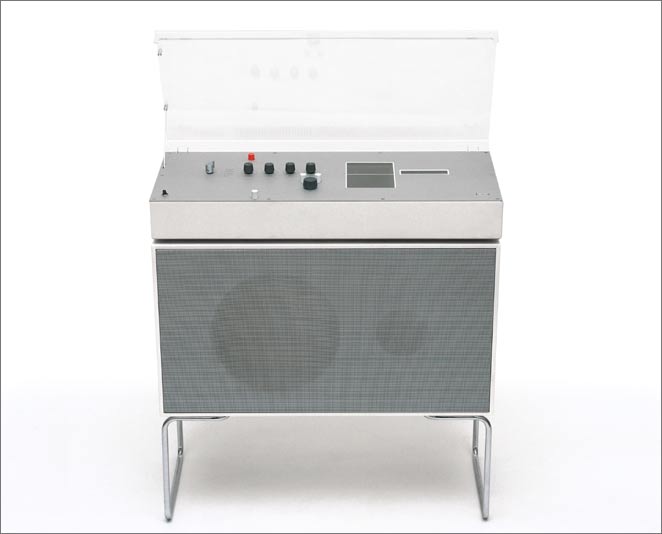
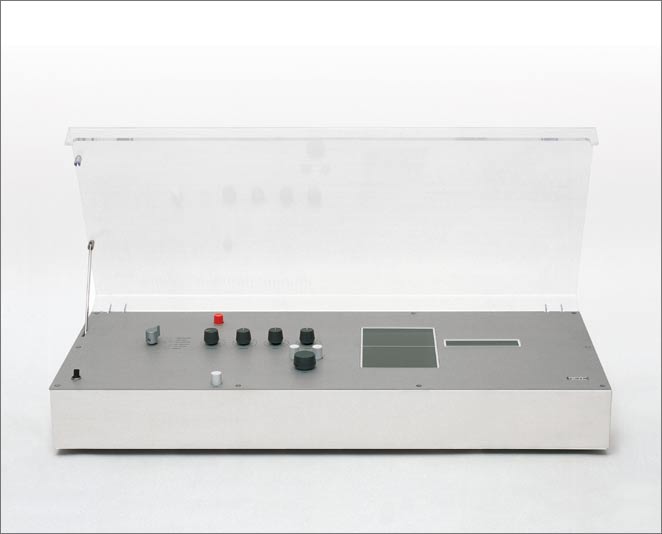
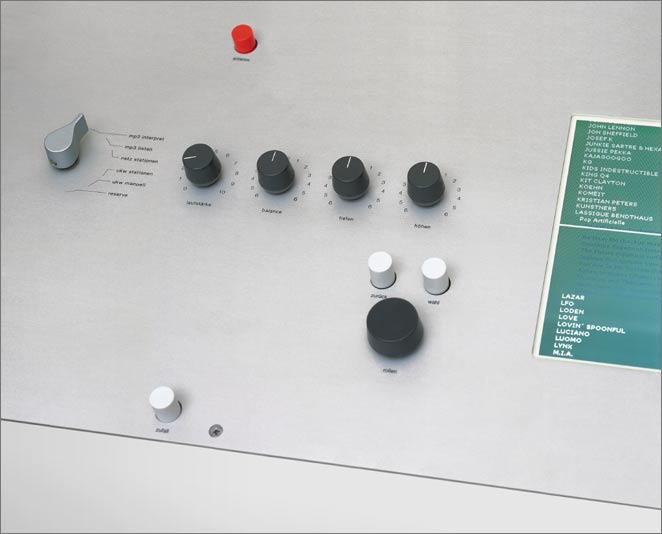
Vintage case, mixed multimedia, liquid crystal,
teak wood.
CNC-milled, anodized, manually reworked.
Non-functional design dummy
DIMENSIONS (WxHxD): 660x80x260mm
~ 12000 EUR purchasing information
“Beocenter 1400” – designed for Bang&Olufsen in
1973 by Jacob Jensen – embodies the epitome of Scandinavian design
at the top of its historical relevance. Formal language, relation of nature
and technology, and formalism in interface design all conjure up the spirit
of modernism. In the series of the Bootleg Objects, the BO.02 is a representative
of the era of the music cassette. However, the cassette slot now houses
a smart card reader. Further, a DVD-drive is hidden behind a previously
unused groove in the front panel, and a 16:9 TFT display has joined the
object on the sly. The legendary slider control formerly used to control
the radio tuning now becomes both a display and controller for a whole
slew of functions. Consequently, instead of “tuning” the label
now reads “anything”.
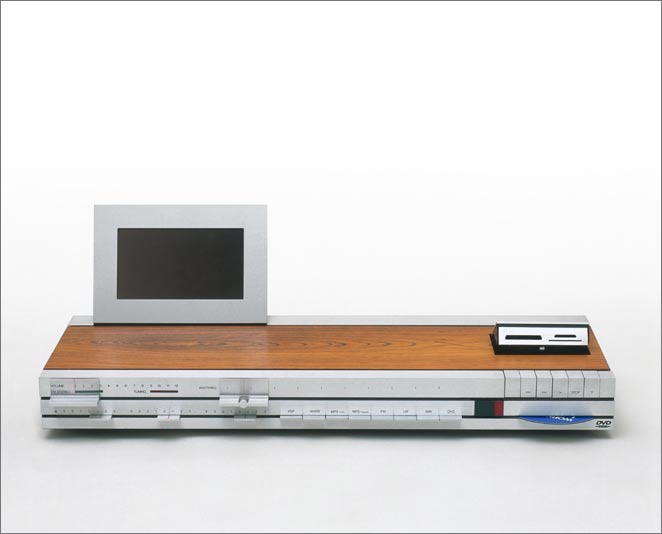
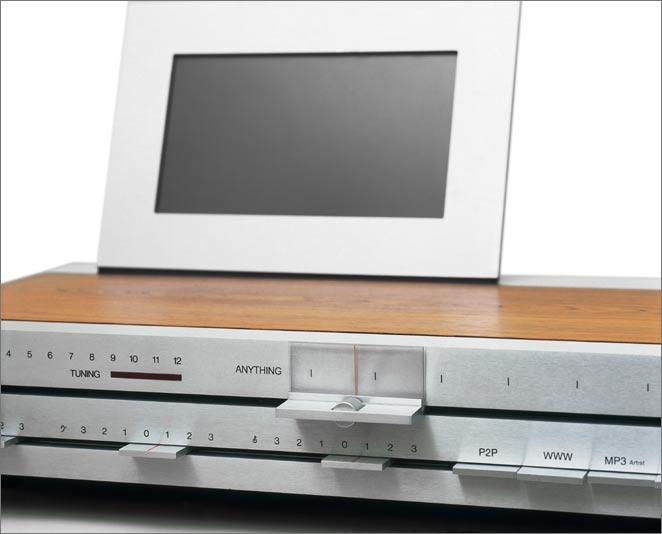
Vintage case, digital data, mixed Multimedia,
Magnesium, tough rubber, fiber
concrete, acrylic. Manually reworked.
Programmed with the VVVV MULTIPURPOSE TOOLKIT.
DIMENSIONEN (BxHxT): 430x120x370mm
6000 EUR purchasing information
Since its inception in 1980, the Technics SL 1210 MKII has become
the universal altar of the cult of DJ. Its technical innovations had a
lasting influence on the development of a number of musical styles. In
the bootleg version, it has been bereft of all function: The turntable
no longer turning, the center pin is gone. Instead of vinyl records, one
puts on souvenirs marked with a special chip – e.g. a cut-out of
the original record sleeve, or an empty CD box. In order to skip to the
next track, one simply gives the case a slap with the palm.
Freed from all functional constraints, the record player becomes a nostalgic
cult object, the ritual of selecting music turns into aesthetic contemplation,
and retaining the record sleeves is discerned as a romantic gesture.
